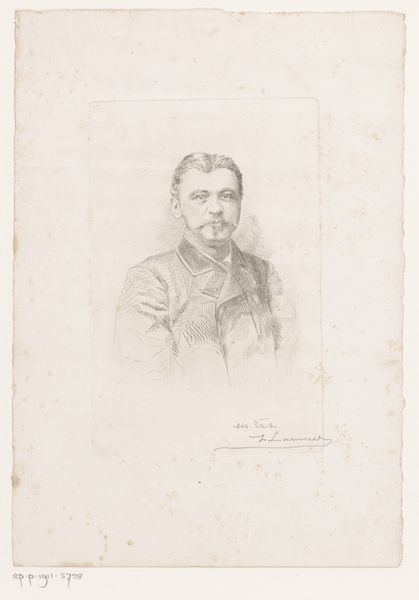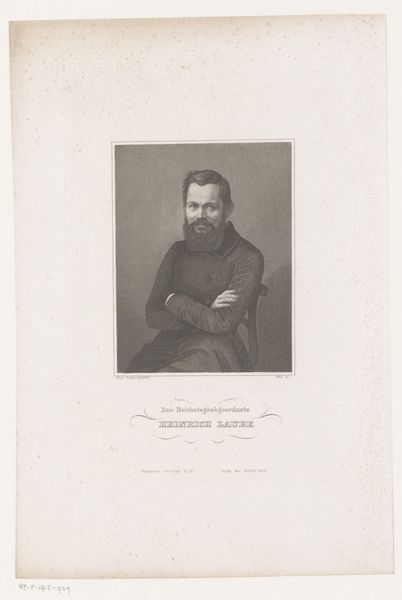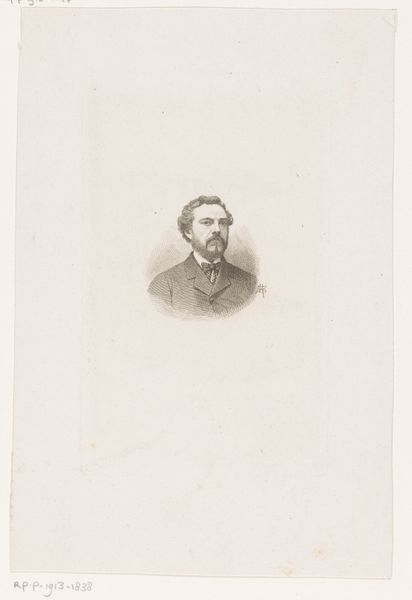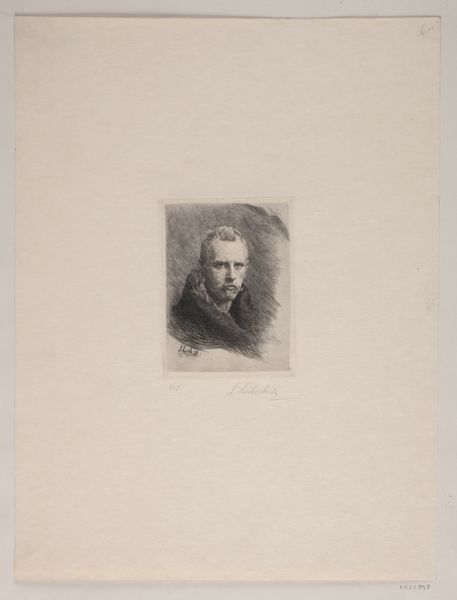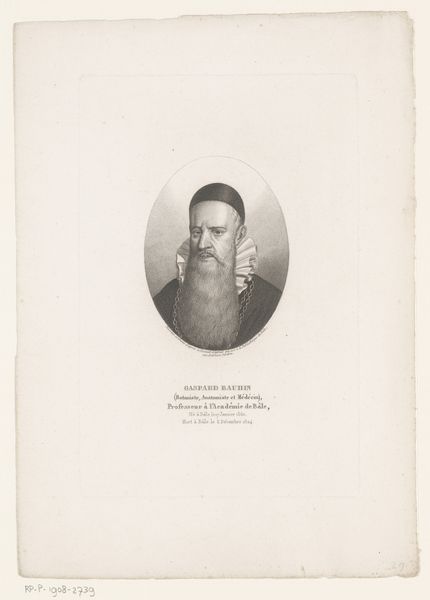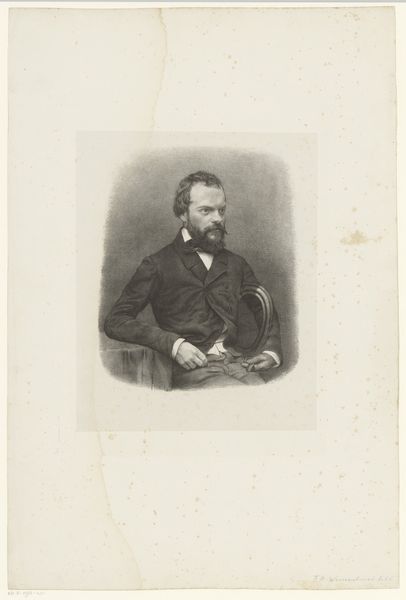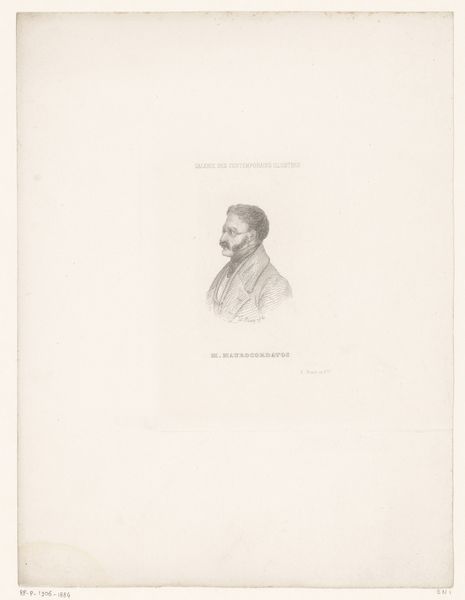
print, paper, engraving
#
portrait
# print
#
paper
#
history-painting
#
academic-art
#
engraving
Dimensions: height 272 mm, width 184 mm
Copyright: Rijks Museum: Open Domain
Curator: This print, titled "Portret van Michelangelo," was created after 1847 and now resides in the Rijksmuseum's collection. Joseph Schubert is credited with its creation. Editor: There's something incredibly somber about this image. The delicate shading gives the subject a weary, almost melancholic air. It's quite compelling. Curator: Indeed. Consider the medium, an engraving on paper, lending itself to fine lines and tonal gradations. Observe how the cross-hatching defines form, creating volume in his face and clothing with varying densities of line. It exemplifies academic portraiture, relying on established visual codes. Editor: What I find striking is the laborious nature of engraving – the time invested in meticulously carving those lines. Think of the artisan, potentially far removed from Michelangelo himself, still engaging with his image decades, even centuries, after his death. The labor is the material here; it makes the image. Curator: It is true that we might view the act of engraving as a mediation, layered across temporal spaces between the past and the present, yet, in and of itself, this linear system allows for modulation of value within this mimetic depiction. One must observe the treatment of light across his face. Editor: Light, yes, but how the print circulated – the economics of its production, who had access to it, how it contributed to the construction of Michelangelo's artistic persona, that matters just as much. The paper itself – its cost, availability, and its journey to become art, is relevant. Curator: A fair point, but consider that its formal qualities facilitate accessibility, allowing for the broader dissemination of Michelangelo’s likeness, furthering a visual narrative of artistic genius. Editor: Exactly, but remember it wasn't Michelangelo himself producing these images; skilled laborers played their part in shaping his image for mass consumption, which brings focus to craft and labor as valuable factors to be further explored. Curator: Indeed, thinking about process is important. By examining this print, we uncover complex interactions between form and production. Editor: Yes, from both labor-intensive craftsmanship to the symbolic weight a simple sheet of paper can carry.
Comments
No comments
Be the first to comment and join the conversation on the ultimate creative platform.

